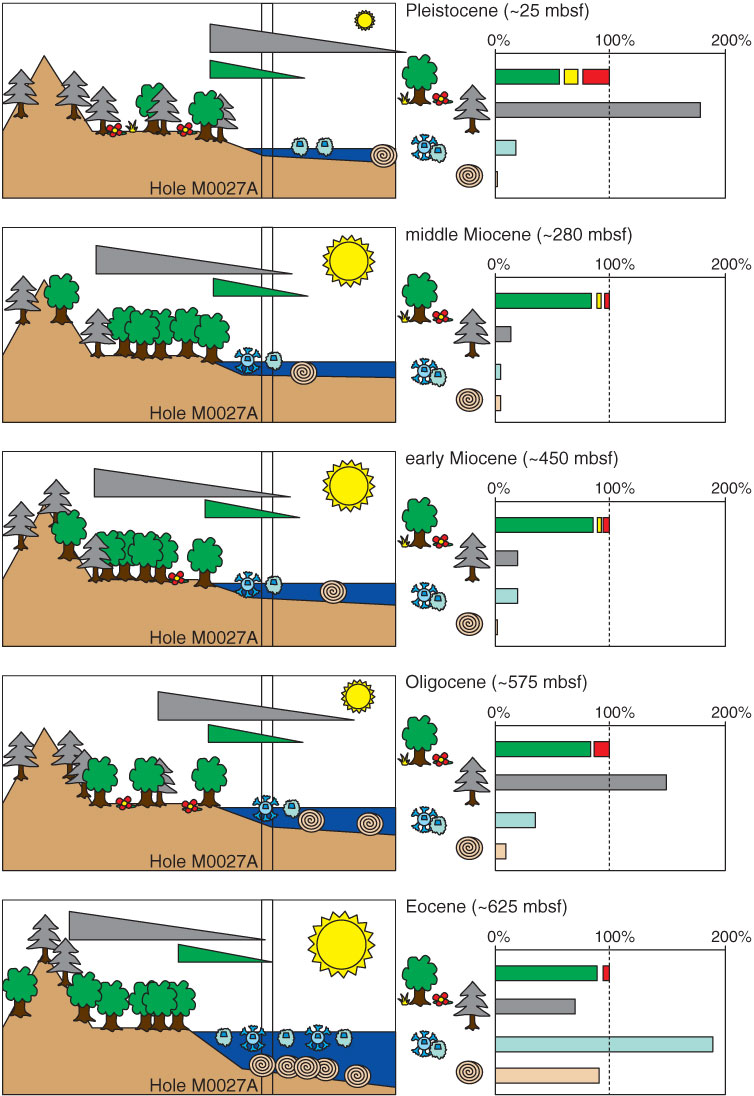
Figure F40. Simplified sketches showing hinterland and coastal ecology based on Hole M0027A sample analysis for the (?)Eocene, Oligocene, lower Miocene, middle Miocene, and Pleistocene. Gray trees = trees producing bisaccate pollen, green trees = trees producing nonsaccate pollen (mainly oaks and hickory during most intervals). Gray triangles = bisaccate pollen transport potential, green triangles = nonsaccate pollen transport potential. Red flowers = herbs producing nonsaccate pollen, excluding monoporate pollen; yellow tussocks = grasses. Spirals = foraminifer test linings, cyan symbols = dinocysts. Size of yellow sun is proportional to estimated temperatures. Percentages of palynomorphs are displayed on the right. Reference sum is the total amount of nonsaccate pollen. Green bars = pollen probably related to broad-leaf trees (mainly oaks in most samples), yellow bars = pollen of grasses (Poacea), red bars = herbal pollen. Gaps between green, red, and yellow bars = nonsaccate pollen that could not be assigned to the three main groups (pollen grains of aquatic plants, pollen filled with pyrite, and pollen of families containing both herbal and arboreal taxa).

Previous | Close | Next | Top of page